Safe Havens
July – August 2013
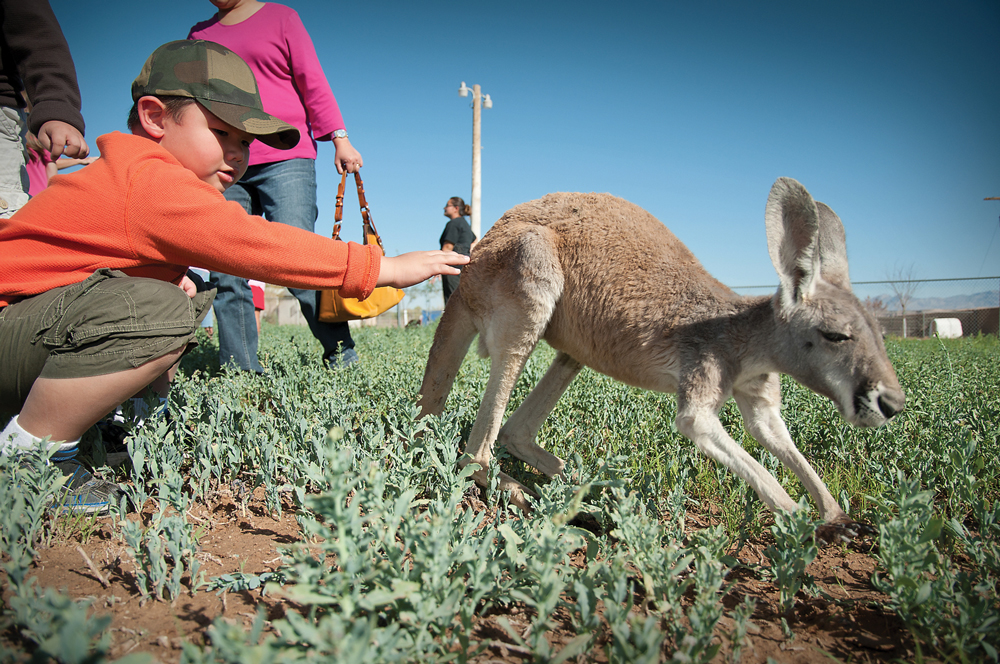
Nevada’s wildlife sanctuaries rescue animals while educating and entertaining visitors.
BY CAMBRIA ROTH
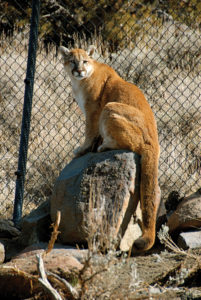
Animal Ark, Reno
When entering Animal Ark, a short drive north of Reno, the first thing children notice is a newly built playground. Next are the tigers—a white tiger or Bengal depending on the day. “Wandering down the path is what makes Animal Ark special,” says Aaron Hiibel, executive director. “It isn’t row after row of animals in enclosures, but it is like going into the wild, and you see these animals from five feet away.”
The animals at Animal Ark vary from the slow-and-steady tortoises to the fast-and-furious tigers and cheetahs. Though it is a small organization, Animal Ark has ties with international cheetah conservation agencies in Botswana, Kenya, and South Africa.
The sanctuary is open to the public for four annual cheetah runs, in which visitors can observe the animals running at speeds of 70 mph. The Lure of the Cheetah event is July 6, and the On the Wind Cheetah Run is September 8.
Animal Ark was born 32 years ago when Hiibel and his wife, Diana, bought two Gray Wolves. After realizing the wolves shouldn’t be pets, they wanted to educate others. “Our mission statement is to inspire environmental stewardship through wildlife education,” Hiibel says. “We have an educational coordinator on site, and grant funding to increase our education programs, which impacts 8,000 kids. So if you want to learn about wildlife, Animal Ark is the place to go.”
While their philosophy is that wild animals belong only in the wild, Animal Ark’s employees believe, in reality, this likely isn’t possible. So for an animal to be in captivity, enrichment is a necessity. “We take piñatas and cardboard boxes and put chicken treats inside, and kids love to see the animal come out and try to get that treat,” Hiibel says.
Animal Ark is open seasonally from April to November, every Tuesday through Sunday from 10 a.m. to 4:30 p.m. It also hosts Ark At Dark on August 17, as well as a number of other events through Thanksgiving weekend.
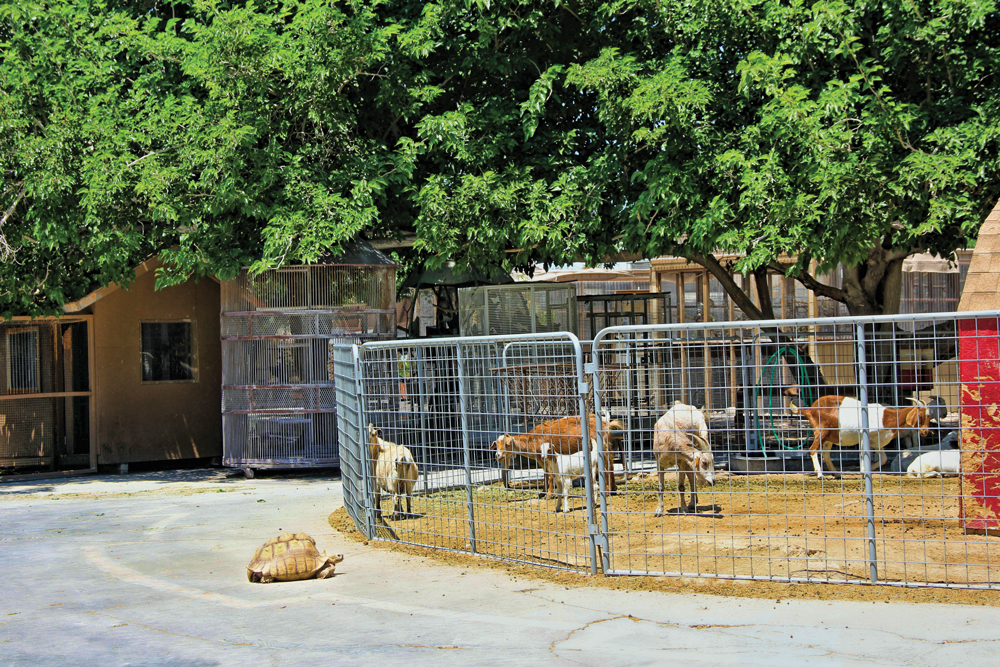
Gilcrease Nature Sanctuary, Las Vegas
One of the few animal rescue centers located in Las Vegas, Gilcrease Nature Sanctuary is home to more than 200 birds. The sanctuary’s focus is of the avian variety, so you will see and hear several different and unique species of birds, from parrots to swans—flying, swimming, chirping, and honking. “Our purpose is to foster the preservation of wildlife while providing cultural education for all visitors,” says Taylor Andrews, executive director at Gilcrease Nature Sanctuary.
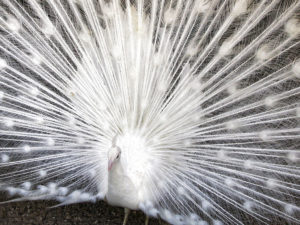
Gilcrease encourages responsible pet adoption so that the facility doesn’t experience a growth in accepting future unwanted pets. They educate the public through on-site classes and presentations on animal wellness, and also give tours of the facility.
This organization is a nonprofit and is dependent upon admission fees, pet-adoption fees, and fundraising events throughout the year. “We like to think that our place is special because it’s in the desert, and there aren’t any other places around for animals to go,” Andrews says.
Gilcrease adjusts the weather conditions for the birds by bringing them inside, or using heating systems for their cages during the winter. In the summer, because of the harsh desert heat, they are kept in cages with cooling systems.
For those who want to see larger species of animals, there are more than 40 different varieties including llamas, goats, donkeys, and tortoises. “Every animal has a special place. We understand that some animals become unwanted, and we felt it necessary to have a place where they can come and be wanted,” Andrews says.
The nature sanctuary is open to the public daily from 9 a.m. to 4 p.m. Admission is $5 for adults and $1 for children.
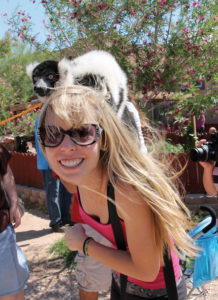
Roos-N-More Zoo, Moapa Town
Roos-N-More Zoo began with a wallaby and a love for animals. In 2002, a wallaby named Pogo joined the family of Jay and Valerie Holt and soon after, Jay met and fell in love with a camel. When their mob of kangaroos and wallabies grew to 15, they decided it was time to move to the country from Las Vegas. In Moapa Town, Valerie found herself sharing the animals at her children’s schools and, as the visitors stopping to see the animals increased, so did her and Jay’s collection. Valerie was drawn to discovering and learning about uncommon species of animals that she had never known existed.
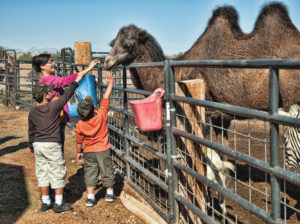
Today, Roos-N-More is home to nearly 300 animals, including lemurs, monkeys, a sloth, birds, reptiles, camels, a zebra, a caracal, a serval, tamarins, marmosets, wallabies, and kangaroos. “Without places like Roos-N-More, many of these animals would only be read about in books or seen on television,” says Carrie Marques, animal care manager. “All animals play an important part in the world, and learning about how these animals live and interact with each other and their environments teaches us a lot about ourselves as humans.”
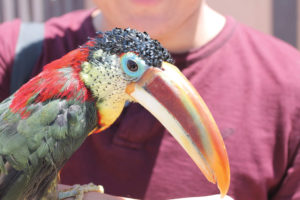
This zoo is unique in that it is one of only three Zoological Association of America-accredited facilities in Nevada. To become accredited, a zoo must apply, go through a lengthy inspection process, and meet the ZAA criteria.
The animals at Roos-N-More are given enrichment items in their enclosures, keeping animals entertained and engaged in their surroundings. The zoo is operated on donations, admission
prices, and private tours—plus occasional grants from generous businesses.
Roos-N-More Zoo is open from 9 a.m. to 1 p.m. on specific zoo days each month, which can be found by visiting the website, roosnmore.org. The zoo also offers on-site parties, private tours, and the opportunity to “bring the zoo to you.”
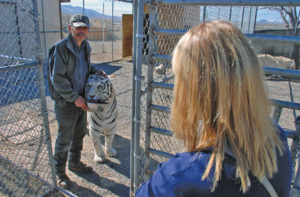
S.A.B.R.E. Foundation, Stagecoach
As a child, Peter Renzo fell in love with tigers after visiting a big-cat doctor’s house. As he stood outside of the lion’s cage, he felt a sense of eeriness while looking at the size and strength of the huge animal. The doctor approached him, asked his name, then said, “Peter, would you like to come in the cage and pet my lion, Sampson?”
Renzo answered, “I don’t know. I hear all of these crazy stories about these cats and how they can hurt people.” The doctor answered nonchalantly, “Is that all you’re afraid of? Don’t worry. You never feel a bite that kills you.”
This was the beginning of a whirlwind romance between Renzo and Siberian tigers. He established the organization S.A.B.R.E. Foundation in 2000 after acquiring his prize tiger, Sabre, who weighed more than 1,000 pounds and was one of the largest Siberians.
Sabre lived in Renzo’s house and was considered a part of his family. “After having Sabre, this beautiful animal, I decided I needed to do something for other tigers out there and the people who need to be educated about these cats,” Renzo says.
Located in Stagecoach, between Virginia City and Fallon, the acronym S.A.B.R.E. stands for Siberians Are Becoming Rapidly Extinct, and its goal is to preserve endangered animals and educate the public as they observe the six tigers on the premises. Renzo believes that it is only through education and awareness that the tiger population can rebound.
The difference with this foundation is that observers are able to watch Renzo feed and interact with the animals. They watch as he rubs heads with the tigers as if he is one of them. He gives the tigers kisses and hugs and seems to intermingle with the cat population. “People can relate better by seeing me pet the tigers, and it helps them see how tigers are similar to their house cats, and what we are saving,” Renzo says.
S.A.B.R.E. Foundation goes through more than 24,000 pounds of meat per year. Renzo uses feeding time as an educational tool to show visitors how the tigers would act in their natural habitat— with caution. “You can never forget that these are tigers,” Renzo says. “The female tigers eat their chunked meat as they growl and are extremely aggressive. They are still tigers and aren’t meant to be pets.”
The S.A.B.R.E. Foundation is open to the public five days a week: Friday through Monday and Wednesday from 10 a.m. to 7 p.m.
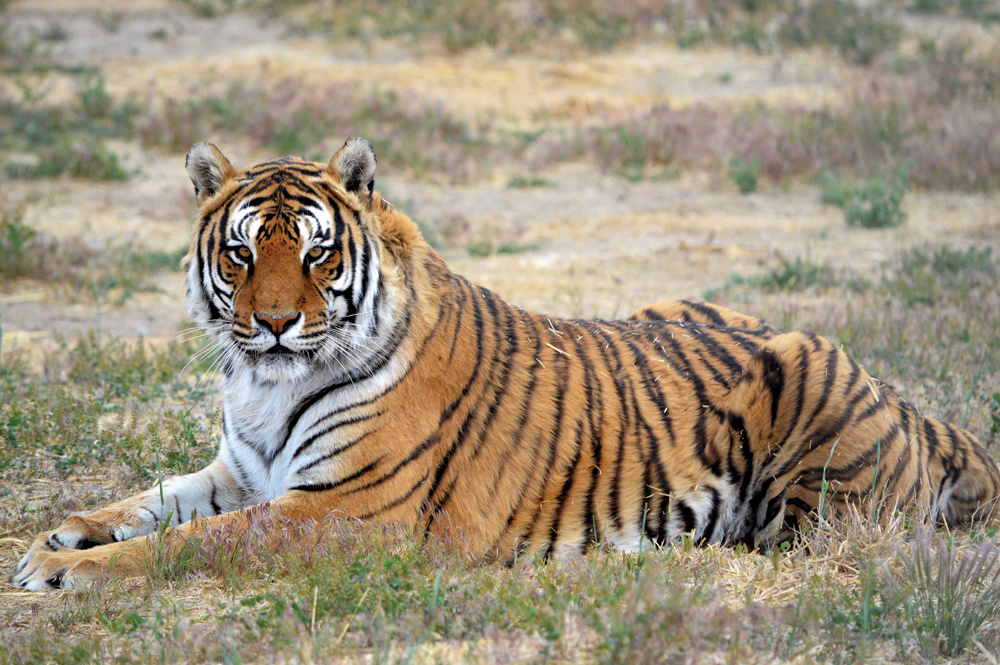
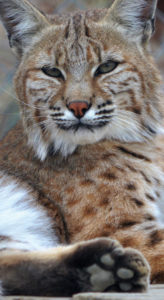
Safe Haven Rescue Zoo, Central Nevada
Safe Haven Rescue Zoo unofficially began in Northern Illinois when founder Lynda Sugasa rescued an injured opossum in 1999. Her passion for rescuing illegally owned or abandoned animals and rehabilitating wildlife began after that initial rescue. “It is important to provide lifelong care for animals because they have the right to finish out their lives in dignity,” Sugasa says.
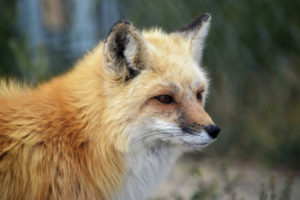
By 2006, the zoo had outgrown its Midwest home and moved to a 160-acre property off State Route 400, about midway between Interstate 80 (exit 149 at Mill City) and Unionville in Buena
Vista Valley. Today Safe Haven is home to 30 permanent residents, including lions, Siberian tigers, mountain lions, African servals, bobcats, foxes, coyotes, and a Canadian Lynx, which have all been rescued throughout the United States. “A lot of people get cubs because they think they are cute and use them for photo-ops, but as they get older these people don’t have use for the cubs anymore so they are surrendered,” Sugasa adds.
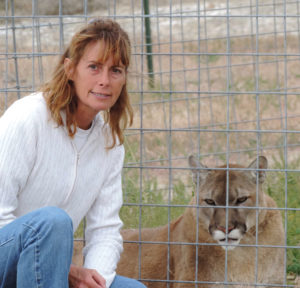
Safe Haven is one of about 30 facilities of its kind in the country accredited by the American Sanctuary Association, and it recently became a verified organization with the Global Federation of Animal Sanctuaries. It boasts 10,000-square-foot enclosures for animals that include climbing platforms and attack boxes to illicit wild behavior and prevent boredom. The zoo also hosts field trips for regional schools and encourages visitors. The best times to visit (available by appointment seven days a week) are in the morning and evening; midday summer visitors will find that animals are more prone to retreat to their dens because of the heat.
Annual animal sponsorships at Safe Haven are a great way to support the nonprofit facility and are tailored to fit any budget, from $250 sponsorships of African lions Ifaw and Kovu to $30 for red fox Cheyenne. Safe Haven is hosting its second annual Tiger Dash 5k on October 12.
Sierra Safari Zoo, Reno
Jimmie Martin, Dale McDaniel, and Dave Dawson once had a collection of exotic animals, most notably ostriches, on their land behind Bonanza Casino in north Reno. However, when the amount of animals they collected became a zoo, quite literally, they wanted a place for people in Reno to observe them.
Hence, they opened the Sierra Safari Zoo in 1990, and it has been fostering compassion for and knowledge about animals ever since. Dale and Dave have since passed away, but their legacies remain. “We do this with a commitment for the responsible care of our animal ambassadors and to encourage the thoughtful stewardship of all animals on Earth,” Martin says.
While it isn’t a rescue facility, the zoo provides homes for animals that otherwise wouldn’t have one. Whether it is a reptile outgrowing its family, a primate from a research facility, or a wildcat leaving its previous owner, the Sierra Safari Zoo is willing to give the animal a home. “I think it is important for us to care for animals because it is part of what makes us human and keeps us sane,” Martin adds. “Not all people need to care for animals, but many of us are driven to do so.”
Today, there are more than 200 animals at the zoo that comprise more than 40 species. Visitors might see a primate climbing atop trees in its private habitat, or a “liger” (the hybrid of a lion father and tiger mother) prowling with a lion’s pride.
Thanks to the Zoo Crew (30 to 40 volunteers), each animal is well cared for, and the zoo takes every aspect of the animal’s habitats into consideration by giving them spaces much larger than USDA requirements. While some animals are in open environments, other more dangerous animals are kept in enclosures with roofs. Temperature is always taken into account, and tropical animals are kept in climate-controlled enclosures.
“The animals live longer, healthier, and lower-stress lives than their wild relatives,” Martin says. “If humans stop destroying and moving into their habitats, there would be more space for them. Some animals’ futures may only be in captivity.”
Sierra Safari Zoo is open seasonally from April 1 to October 31, seven days a week from 10 a.m. to 5 p.m. The zoo is located 10 miles north of downtown Reno.



